All tutorials will take place on 10 April 2022.
List of Tutorials
TUT-01: Physical Layer Communications via Deep Learning
TUT-02: The Future of Non-terrestrial Mobile Networks: Integrating Ground, Air, and Space
TUT-03: Wireless Channel Charting for Massive MIMO
TUT-04: Terahertz Communications for 6G and Beyond: Opportunities, Recent Advances, and Future Research Trends
TUT-05: Integrated Access and Backhaul for 5G and Beyond
TUT-06: Multi-antenna Coded Caching for Enhanced Wireless Content Delivery
TUT-07: Semantic Communications: Transmission beyond Shannon Paradigm
TUT-09: Build your own OpenRAN-Ready 5G Campus Network – Understanding Customization Options for different Verticals
TUT-10: MetaEverything: Ubiquitous Sensing and Communications Aided by Intelligent Meta-Surfaces
TUT-11: A Deep Dive into 3GPP NR PHY/MAC Layer Design for 5G Networks
TUT-12: Distributed Machine Learning for 6G Networks: A Tutorial
IN-PERSON SESSIONS
TUTORIAL 1: Physical Layer Communications via Deep Learning
(10 April, 09:00 CST, Room 416A, 4th Floor)
Abstract:
The design of codes for communicating reliably over a statistically well defined channel is an important endeavor that involves deep mathematical research and wide-ranging practical applications. Traditionally, it involves imposing some structure to encoders (e.g., linearity of codes) and decoders (e.g., iterative decoding), which pares down the complexity of space of encoders and decoders. These structures have entailed tremendous human effort and are the product of substantial ingenuity.
A natural question is whether some of the canonical codes can be “learned from data”. We will begin by illustrating recent successes in this vein. Specifically, we will cover the result that an end-to-end learning of the code can recover the performance of turbo codes for moderate block lengths. In the second part, we will describe recent successes in discovering new codes and PHY algorithms that strictly improve upon the state of the art, examples of which include networks, channels with feedback, and completely end-to-end neural communication algorithms. In terms of methodology, there is a large spectrum of approaches, ranging from (a) using reinforcement learning to optimize existing code in a near black-box fashion, to (b) the neural augmentation method, which introduces learnable components to existing communication algorithms, to (c) the completely neural end-to-end learned algorithms.
Bios:
Hyeji Kim: Hyeji Kim is an assistant professor and the AMD chair in the Department of Electrical and Computer Engineering at the University of Texas at Austin. She is a member of the 6G@UT center at the Wireless Networks and Communications Group (WNCG) at UT Austin. She received her Ph.D. from Stanford University in 2016. She was a postdoctoral researcher at the University of Illinois at Urbana-Champaign from 2016 to 2018, after which she worked as a machine learning researcher at the Samsung AI Research Cambridge until 2020. Her research interests include information theory, machine learning, and machine learning for information theory/wireless communications.
Yihan Jiang: Yihan Jiang has been a Founding Research Engineer in Aira Technology since 2020. He received his Ph.D from University of Washington in 2021. He was a finalist of Qualcomm Innovation Fellowship 2018. His Ph.D research interests include deep learning, federated learning, meta learning, and channel coding. His current interest is to apply machine learning to modern communication products.
TUTORIAL 3: Wireless Channel Charting for Massive MIMO
(10 April, 14:00 CST, Room 416A, 4th Floor)
Abstract:
Channel charting is an emerging framework that enables pseudo-positioning of user equipment (U.E.s) from channel state information (CSI) only. More concretely, channel charting associates CSI to U.E. spatial location using dimensionality reduction and manifold learning, thus enabling the infrastructure base stations or wireless access points to perform several predictive tasks relevant to emerging wireless networks that depend on U.E. location. Prominent application examples are localization relative to points-of-interest, U.E. grouping, cell handover, U.E. path prediction, predictive rate control, assisted beam-finding, etc. This tutorial aims to provide the audience with an exhaustive overview of the nascent research field of channel charting, which is at the intersection of machine learning, numerical optimization, channel modeling, and communication theory. To this end, this tutorial will (i) introduce a wide range of theoretical and algorithm-level concepts and (ii) demonstrate its efficacy with real-world results from indoor and outdoor Massive MIMO channel measurements.
Bios:
Maxime Guillaud is a researcher in Huawei Technologies' Mathematical and Algorithmic Research Lab in Paris. He heads the signal and information, processing group. He has 20 years of expertise in the domain of wireless communications in both academic and industrial research environments. He received his Ph.D. in 2005 from EURECOM, France. He previously held positions at Vienna University of Technology, FTW Telecommunications Research Center Vienna, and Bell Labs. He is an expert in the physical layer of modern wireless communications systems and has made contributions to channel modeling and reciprocity calibration, Massive MIMO, non-coherent communications, and more. He has published over 80 journal and conference papers and holds eight patents. He is a Senior Member of IEEE and an Associate Editor for the IEEE Transactions on Wireless Communications.
Christoph Studer is an Associate Professor at ETH Zurich, Zurich, Switzerland. In 2013, he held the position of Research Scientist at Rice University. From 2014 to 2019, Prof. Studer has been an Assistant Professor at Cornell University and an adjunct Assistant Professor at Rice University, TX. From 2019 to 2020, Prof. Studer has been an Associate Professor at Cornell University in Ithaca, NY, and at Cornell Tech in New York, NY. Since Summer 2020, he has been an Associate Professor at the Department of Information Technology and Electrical Engineering at ETH Zurich. Prof. Studer's research interests are in the design and analysis of algorithms and hardware designs for future multi-antenna wireless communication systems. Prof. Studer was the lead inventor of Channel Charting in 2018, which was developed together with Prof. Olav Tirkkonen from Aalto University, Finland.
TUTORIAL 11: A Deep Dive into 3GPP NR PHY/MAC Layer Design for 5G Networks
(10 April, 09:00 CST, Room 416B, 4th Floor)
Abstract:
The 5th generation (5G) of cellular networks will need to address the digital society's traffic demands and new use cases beyond 2020. Long Term Evolution (LTE), the set of specifications that the 3GPP has introduced for 4G systems, will not address all the 5G use cases effectively. To overcome LTE's limitations, the 3GPP has recently defined a new Radio Access Technology (RAT), i.e., 3GPP N.R., introducing novel designs and technologies that comply with 5G requirements. Along these lines, this tutorial will provide a comprehensive overview of the 3GPP N.R. standardization activities for the Physical (PHY) and the Medium Access Control (MAC) layers. After introducing 3GPP N.R. main innovations for 5G systems, the first part of the tutorial will be dedicated to the overview of the 3GPP NR PHY layer, focusing on the renovated N.R. frame structure, the N.R. spectrum (including the millimeter wave (mmWave) spectrum), the MIMO technology, the duplexing schemes, and the NR PHY signals and channels. The second part of the tutorial will review the 3GPP NR MAC procedures, from scheduling to beam management for mmWave networks. In conclusion, the tutorial will provide guidelines, following the specifications standardized by 3GPP N.R., towards the optimal design of such procedures as a function of the deployment parameters.
Bios:
Marco Giordani received his Ph.D. Degree in Information Engineering from the University of Padova, Italy, in 2020, he is now a Postdoctoral Researcher and Adjunct Professor. During his Ph.D., he visited New York University (NYU), USA, and TOYOTA Infotechnology Center Inc., USA. He has collaborated with several academic and industrial research partners, including InterDigital, NYU, TOYOTA, NIST, the U.S. Army Research Office, Orange, Huawei, King's College, and KAUST. He co-authored 50+ published articles in millimeter-wave wireless networks, two of which have received Best Paper Awards. He is a recipient of several awards, including the IEEE Daniel E. Noble Fellowship Award from the IEEE Vehicular Technology Society, the Francesco Carassa Prize from the Italian Telecommunications and Information Theory Group (GTTI), the Young Researcher Award from the Human Inspired Technology Research Center (HIT), and the IEEE ComSoc Outstanding Young Researcher Award for EMEA. He serves as Associate Editor for the "Aerial and Space Networks" section of the Frontiers in Communications and Networks Journal. He is also serving as Guest Editor for several Special Issues of Sensors (MDPI). His research interests focus on protocol and architecture design for 5G/6G cellular and vehicular networks.
VIRTUAL SESSIONS
TUTORIAL 2: The Future of Non-terrestrial Mobile Networks: Integrating Ground, Air, and Space
(10 April, 09:00 CST, VIRTUAL)
Abstract:
Next-generation wireless networks are envisioned to break the boundaries of the current ground-focused paradigm and fully embrace aerial and space-borne communications. In a quest for anything, anytime, anywhere connectivity, this vertical (r)evolution entails defining a new intelligently integrated network architecture and characterizing its fundamental limits. While the technological and societal implications would be of tremendous long-term significance. Significant hurdles must be overcome to orchestrate tomorrow's integrated ground-air-space mobile network optimally. In light of the unprecedented interest in this field, this one-of-a-kind tutorial blends our academic and industrial views to take a holistic approach to non-terrestrial mobile communications. We will discuss:
- Connectivity requirements for UAVs in 2030; tangible performance results and novel research questions on next-generation aerial communications in microwave, mmWave, and THz bands.
- Fresh updates on the non-terrestrial networks within the 3GPP, including use cases and deployments, architecture, channel modeling, and technical challenges.
- A well-grounded forecast of the potential and design challenges of the future 6G ground-air-space mobile network, jointly orchestrated for direct access, relayed fixed broadband, and IoT support.
Bios:
Giovanni Geraci is an Assistant Professor at Universitat Pompeu Fabra in Barcelona and the coordinator of the Telecommunications Engineering program. He was previously a Research Scientist with Nokia Bell Labs and held a Ph.D. from the UNSW Sydney. He serves as Distinguished Lecturer of IEEE ComSoc and IEEE VTS and Editor for IEEE TWC and IEEE COMML. He is a co-Editor of the book "UAV Communications for 5G and Beyond" by Wiley—IEEE Press and received the IEEE ComSoc Outstanding Young Researcher Award for Europe, Middle East, and Africa.
Adrian Garcia-Rodriguez is currently a Data Scientist in the A.I. Research & Systems Team of Ericsson R&D (France). Previously, he was a Senior Engineer at Huawei Mathematical and Algorithmic Sciences Lab (France) and a Research Scientist in Nokia Bell Labs (Ireland). He joined Bell Labs after receiving a Ph.D. degree from University College London (U.K.). He is the recipient of the 2021 IEEE ComSoc Outstanding Young Researcher Award for EMEA, the Best Paper Award in PIMRC'19 for his work on "UAV-to-UAV cellular communications," and the Most Attended Industry Program Award at IEEE GLOBECOM 2017 for delivering the industrial seminar "Drone Base Stations: Opportunities and Challenges Towards a Truly "Wireless" Wireless Network". He was named an Exemplary Reviewer for IEEE Communications Letters in 2016 and both IEEE Trans. on Wireless Communications and IEEE Trans. on Communications in 2017.
TUTORIAL 4: Terahertz Communications for 6G and Beyond: Opportunities, Recent Advances, and Future Research Trends
(10 April, 09:00 CST, VIRTUAL)
Abstract:
Terahertz (THz) communications are envisioned as an up-and-coming wireless technology for the sixth generation (6G) and beyond wireless networks. In particular, the ultra-wide THz band ranging from 0.1 to 10 THz offers enormous potential to alleviate the spectrum scarcity and break the capacity limitation of emerging wireless systems (such as 4G-LTE and 5G). This will undoubtedly support the epoch-making wireless applications that demand ultra-high quality service requirements and multi-terabits per second data transmission in the 6G and beyond the era, such as terabit-per-second backhaul systems ultra-high-definition content streaming among mobile devices, virtual/augmented reality, and wireless high-bandwidth secure communications.
Against this background, this tutorial provides a comprehensive look at cutting-edge THz communications strategies for 6G and beyond wireless networks. To begin with, this tutorial describes the importance of THz communications in the 6G and beyond era. Then, this tutorial introduces the state-of-the-art fundamental research of THz devices, channels, testbeds, and simulators. After this, the tutorial presents a comprehensive survey of THz communications solutions, including physical layer schemes (e.g., THz modulation and waveform design, THz hybrid beamforming), networking strategies (e.g., THz interference and coverage analysis, THz beam tracking and alignment, and THz MAC protocols), and integration of THz communications with other 6G-oriented techniques (e.g., unmanned aerial vehicle, intelligent reflecting surface, and machine learning). Finally, this tutorial identifies and discusses the significant barriers that future wireless system designers must tackle to reap the full benefits of THz communications in the 6G and beyond era.
Bios:
Nan Yang received his Ph.D. degree in Electronic Engineering from Beijing Institute of Technology in 2011. Since July 2014, he has been with the Australian National University, Canberra, Australia. He is currently an Associate Professor at the School of Engineering and the Head of the Emerging Communications Laboratory. He received the Top Editor Award from the Transactions on Emerging Telecommunications Technologies in 2017, the Exemplary Reviewer Certificate of the IEEE Transactions on Communications in 2016 and 2015, the Top Reviewer Award from the IEEE Transactions on Vehicular Technology in 2015, the IEEE ComSoc Asia-Pacific Outstanding Young Researcher Award and the Exemplary Reviewer Certificate of the IEEE Wireless Communications Letters in 2014, and the Exemplary Reviewer Certificate of the IEEE Communications Letters in 2013 and 2012. Also, he is the co-recipient of Best Paper Awards at the IEEE Globecom 2016 and the IEEE VTC Spring 2013. He is currently serving on the Editorial Board of IEEE Transactions on Molecular, Biological, and Multi-Scale Communications, IEEE Communications Letters, and IEEE Transactions on Vehicular Technology. He was an Editor of IEEE Transactions on Wireless Communications. He has also served as the Guest Editor of eight special issues in internationally leading journals and the symposium/track chair at international flagship conferences such as IEEE ICC and IEEE Globecom. He is a Senior Member of the IEEE.
Chong Han has been with Shanghai Jiao Tong University, Shanghai, China, since June 2016, where he is currently an Associate Professor and the Head of the Terahertz Wireless Communications (TWC) Laboratory. He obtained the Master of Science and the Ph.D. degrees in Electrical and Computer Engineering from Georgia Institute of Technology, Atlanta, GA, USA, in 2012 and 2016, respectively. He received the 2019 Distinguished TPC Member Award, IEEE International Conference on Computer Communications (INFOCOM), 2018 Elsevier NanoComNet (Nano Communication Network Journal) Young Investigator Award, 2018 Shanghai Chenguang Funding Award, and 2017 Shanghai Yangfan Funding Award. He is an editor of Nano Communication Networks (Elsevier) Journal and IEEE Access. He is a TPC Co-Chair or General Co-Chair for the 1st–5th International Workshop on Terahertz Communications, in conjunction with IEEE ICC 2019, Globecom 2019, ICC 2020, ICC 2021, and ICC 2022. Furthermore, he serves as a Vice-Chair of IEEE ComSoc RCC Special Interest Group (SIG) on THz Communications.
Josep M. Jornet is an Associate Professor in the Electrical and Computer Engineering department at Northeastern University in Boston, MA. He received a B.S. in Telecommunication Engineering and an M.Sc. in Information and Communication Technologies from the Universitat Politecnica de Catalunya, Barcelona, Spain, in 2008. He received a Ph.D. degree in Electrical and Computer Engineering from the Georgia Institute of Technology, Atlanta, GA, in 2013. He has co-authored more than 160 peer-reviewed scientific publications one book and been granted 4 U.S. patents. These works have been cited over 11,500 times (h-index of 48). Since July 2016, he has been the Editor-in-Chief of Elsevier's Nano Communication Networks Journal. He serves as the lead principal investigator on multiple grants from U.S. federal agencies, including the National Science Foundation, the Air Force Office of Scientific Research, and the Air Force Research Laboratory. He is a recipient of the National Science Foundation CAREER award and several other awards from IEEE, ACM, U.B., and N.U. He is a Senior Member of the IEEE and a Member of the ACM. He is serving as a Vice-Chair of IEEE ComSoc RCC SIG on THz Communications. He is an IEEE ComSoc Distinguished Lecturer (2022-2023).
TUTORIAL 5: Integrated Access and Backhaul for 5G and Beyond
(10 April, 09:00 CST, VIRTUAL)
Abstract:
To cope with the exponential growth of wireless communications, 5G and beyond will densify the network with many base stations (BSs) of different types. The BSs, however, require backhauling. On a global scale, fiber and wireless microwave technology are dominating backhauling media. Compared to fiber, wireless backhaul comes with significantly lower cost and time-to-market as well as higher flexibility, at the cost of reliability/peak rate.
Traditionally, wireless backhaul has been mainly based on proprietary technology operating in millimeter wave (mmw) spectrum and constrained to line-of-sight propagation conditions. However, with 5G, cellular technology extends into mmw spectrum; the spectrum historically used for backhauling. Also, with small-cells deployed on street level, the backhaul links need to operate also under nonline-of-sight conditions. These, along with reducing the time-to-market/operation cost, are the main motivations for the integrated access and backhaul (IAB) concept. The aim of IAB is to provide flexible wireless backhaul using 3GPP NR technology, providing not only backhaul but also the existing cellular services in the same node.
The objective of the tutorial is to bring new insights to the analysis, design and standardization of IAB networks. Such networks guarantee the communication requirements in future smart cities and solve the ubiquitous connectivity problems in many challenging network environments, e.g., coverage/capacity enhancements in rural areas. The tutorial will 1) go through the recently finished Release 16 and ongoing Release 17 IAB work-items of 3GPP, 2) present proof-of-concept results for the usefulness of IAB, and 3) provide a vision for IAB-related research towards 6G.
Bios:
Behrooz Makki received his PhD degree in Communication Engineering from Chalmers University of Technology, Gothenburg, Sweden. In 2013-2017, he was a Postdoc researcher at Chalmers University. Currently, he works as Senior Researcher in Ericsson Research, Gothenburg, Sweden. Behrooz is the recipient of the VR Research Link grant, Sweden, 2014, the Ericsson’s Research grant, Sweden, 2013, 2014 and 2015, the ICT SEED grant, Sweden, 2017, as well as the Wallenbergs research grant, Sweden, 2018. Also, Behrooz is the recipient of the IEEE best reviewer award, IEEE Transactions on Wireless Communications, 2018. In 2020, Behrooz was selected as the outstanding nominee in the IEEE ComSoc Young Professional award, the industry branch. Currently, he works as an Editor in IEEE Wireless Communications Letters, IEEE Communications Letters, the journal of Communications and Information Networks, as well as the Associate Editor in Frontiers in Communications and Networks. He was a member of European Commission projects “mm-Wave based Mobile Radio Access Network for 5G Integrated Communications” and “ARTIST4G” as well as various national and international research collaborations. His current research interests include integrated access and backhaul, Green communications, millimeter wave communications, and backhauling. He has co-authored 67 journal papers, 47 conference papers and 70 patent applications.
Erik Dahlman received his PhD in Telecommunication from the Royal Institute of Technology in Stockholm Sweden and is currently Senior Expert in Radio Access Technologies within Ericsson Research. He has been deeply involved in the development of all 3GPP wireless access technologies, from the early 3G technologies (WCDMA/HSPA), via 4G LTE, and most recently the 5G NR technology. He current work is primarily focusing on the evolution of 5G as well as technologies applicable to future beyond 5G wireless access.
Erik Dahlman is the co-author of the books 3G Evolution – HSPA and LTE for Mobile Broadband, 4G – LTE and LTE-Advanced for mobile broadband, 4G – LTE-Advanced Pro and The Road to 5G and, most recently, 5G NR – The Next Generation Wireless Access Technology. In 2009, Erik Dahlman received the Major Technical Award, an award handed out by the Swedish Government, for his contributions to the technical and commercial success of the 3G HSPA radio-access technology. In 2010, he was part of the Ericsson team receiving the LTE Award for “Best Contribution to LTE Standards”, handed out at the LTE World Summit. In 2014 he was nominated for the European Inventor Award, the most prestigious inventor award in Europe, for contributions to the development of 4G LTE.
Filip Barać was born in Belgrade, Serbia, where he obtained a Dipl. -Ing. Degree in Telecommunications from the University of Belgrade, in 2009. He then earned an MSc degree in Communication Engineering from the Chalmers University of Technology in Gothenburg, Sweden, in 2011, and a PhD degree in Industrial Wireless Communication from Mid Sweden University in Sundsvall, Sweden in 2016. Since 2016, Filip has been with Ericsson AB in Stockholm, Sweden, where he works as a 3GPP RAN3 delegate and researcher, responsible for the following topics on behalf of Ericsson in 3GPP RAN3: Integrated Access and Backhaul, Quality of Experience, Resource Coordination, Interference Management and User Plane.
Mohamed-Slim Alouini was born in Tunis, Tunisia. He received the Ph.D. degree in Electrical Engineering from the Califonia Institute of Technology (Caltech) in 1998. He served as a faculty member at the University of Minnesota then in the Texas A&M University at Qatar before joining in 2009 the King Abdullah University of Science and Technology (KAUST) where he is now a Distinguished Professor of Electrical and Computer Engineering. He is a Fellow of the IEEE as well as of the OSA and he is currently particularly interested in addressing the uneven global distribution, access to, and use of information and communication technologies in far-flung, low-density populations, low-income, and/or hard-to-reach areas.
TUTORIAL 6: Multi-antenna Coded Caching for Enhanced Wireless Content Delivery
(10 April, 09:00 CST, VIRTUAL)
Abstract:
Multi-antenna coded caching combines a global caching gain proportional to the cumulative cache size found across the network. An additional spatial multiplexing gain stems from using multiple transmitting antennas. However, a closer look reveals a few severe bottlenecks that hinder its practical implementation:
- The well-known exponential sub-packetization bottleneck dramatically reduces performance when the communicated file sizes are finite.
- The considerable optimization complexity of beamforming multicast messages when the SNR is finite.
- The near-far issue limits the attainable performance at any multicast group to the achievable rate of the user with the worst channel conditions within the group.
In this tutorial, we investigate these three major impediments and review the related literature. For the sub-packetization bottleneck, we first check solutions based on single antenna transmitters and then provide an overview of recent multi-antenna schemes with novel interference cancellation techniques resulting in much smaller sub-packetization requirements. For the beamformer design, we introduce efficient reduced-complexity schemes where the spatial multiplexing gain and multicast group sizes are adjusted intelligently. Finally, for the near-far issue, we show how location-dependent caching techniques can be used to alleviate the problem by allocating larger cache portions for data likely to be requested in locations with poor wireless connectivity. Specifically, we consider an emerging immersive viewing application and illustrate how such uneven cache placement of location-dependent multimedia content can help achieve a more evenly distributed quality of experience within the application environment.
Bios:
Antti Tölli is an Associate Professor with the Centre for Wireless Communications (CWC), University of Oulu. He received the Dr.Sc. (Tech.) degree in electrical engineering from the University of Oulu, Oulu, Finland, in 2008. From 1998 to 2003, he worked at Nokia Networks as a Research Engineer and Project Manager both in Finland and Spain. In May 2014, he was granted a five-year (2014-2019) Academy Research Fellow post by the Academy of Finland. During 2015-2016, he visited EURECOM, Sophia Antipolis, France. From August 2018 till June 2019, he visited the University of California Santa Barbara, USA. He has authored numerous papers in peer-reviewed international journals and conferences and several patents, all in signal processing and wireless communications. His research interests include radio resource management and transceiver design for broadband wireless communications, emphasizing distributed interference management in heterogeneous wireless networks. From 2017 to 2021, he served as an Associate Editor for IEEE Transactions on Signal Processing.
Seyed Pooya Shariatpanahi received the B.Sc., M.Sc., and Ph.D. degrees from the Department of Electrical Engineering, Sharif University of Technology, Tehran, Iran, in 2006, 2008, and 2013, respectively. He is currently an Assistant Professor with the School of Electrical and Computer Engineering, University of Tehran. Before joining the University of Tehran, he was a Researcher with the Institute for Research in Fundamental Sciences (IPM), Tehran. His research interests include information theory, network science, wireless communications, and complex systems. He was a recipient of the Gold Medal at the National Physics Olympiad in 2001.
Mohammad Javad Salehi received the B.Sc., M.Sc., and Ph.D. degrees from the Department of Electrical Engineering, Sharif University of Technology, Tehran, Iran, in 2010, 2012, and 2018. Since 2019, he has been a postdoctoral researcher at the Center for Wireless Communication (CWC) at the University of Oulu, Finland. His main research interests include multi-antenna communications and wireless coded caching.
TUTORIAL 7: Semantic Communications: Transmission beyond Shannon Paradigm
(10 April, 09:00 CST, VIRTUAL)
Abstract:
Shannon and Weaver categorized communications into three levels:
- Level A. How accurately can the symbols of communication be transmitted?
- Level B. How precisely do the transmitted symbols convey the desired meaning?
- Level C. How effectively does the received meaning affect conduct in the desired way?
In the past decades, researchers primarily focus on level A communications. With the development of cellular communication systems, the achieved transmission rate has been improved tens of thousands of times. The system capacity is gradually approaching the Shannon limit. Semantic communications have been regarded as a promising direction to improve the system efficiency and reduce the data traffic to realize the level B or even level C communications. Semantic communications aim to discover the successful semantic information transmission relevant to the transmission task at the receiver. In this tutorial, we first introduce the concept of semantic communications and a general model. We then detail the principles and performance metrics of semantic communications. Afterward, we present the initial work on deep learning-enabled semantic communications for different sources, multi-user semantic communication systems, and green semantic communications. Finally, we identify the research challenges in semantic communications.
Bios:
Geoffrey Ye Li is currently a Chair Professor in wireless systems with Imperial College London. Before joining Imperial in 2020, he was with Georgia Institute of Technology for 20 years and AT&T (Bell) Labs - Research for about five years. His general research interests include statistical signal processing and machine learning for wireless communications. In the related areas, he has published over 500 journal and conference papers in addition to over 40 granted patents. His publications have been cited by over 40,000 times, and he has been recognized as a Highly Cited Researcher. Dr. Li was awarded IEEE Fellow for his contributions to signal to process for wireless communications in 2005. He won several prestigious awards from IEEE Signal Processing Society (Donald G. Fink Overview Paper Award in 2017), IEEE Vehicular Technology Society (James Evans Avant Garde Award in 2013 and Jack Neubauer Memorial Award in 2014), and IEEE Communications Society (Stephen O. Rice Prize Paper Award in 2013, Award for Advances in Communication in 2017, and Edwin Howard Armstrong Achievement Award in 2019). He also received the 2015 Distinguished ECE Faculty Achievement Award from Georgia Tech. Dr. Li has organized and chaired many international conferences and has been involved in editorial activities of many journals, including the founding Editor-in-Chief of IEEE JSAC ML Series.
Zhijin Qin is a Lecturer (Assistant Professor) at the Queen Mary University of London. She was with Lancaster University as a lecturer and Imperial College London as a research associate from 2016 to 2018. Her research interests include machine learning and compressive sensing in wireless communications and Internet of Things networks. She serves as an area editor of IEEE JSAC Series on Machine learning in Communications and Networks, an associate editor of IEEE Transactions on Communications, IEEE Transactions on Cognitive Communications and Networking, and IEEE Communications Letters. Dr. Qin has served as the symposium co-chair for IEEE VTC Fall 2019 and Globecom 2020/2021. She received the IEEE Globecom Best Paper Award 2017, the IEEE Signal Processing Society Young Author Best Paper Award 2018, and the IEEE ComSoC SPCC early achievement award 2021.
TUTORIAL 9: Build your own OpenRAN-Ready 5G Campus Network – Understanding Customization Options for different Verticals
(10 April, 09:00 CST, VIRTUAL)
Abstract:
5G Campus Networks have a high potential to drive overall 5G innovations and the 5G evolution towards 6G, as they allow in contrast to massive national 5G operator network rollouts to deploy smaller innovative network infrastructures, which are highly customized to specific application needs and which could benefit from newest 5G standalone and Open RAN technologies, and also enable different operation models. Particularly Germany is considered as a pioneer in this context by the provision of local 5G spectrum allowing to build private / enterprise, i.e. non-public campus networks in addition to operator campus networks.
This tutorial will provide a holistic overview of the application drivers from different vertical domains, such as manufacturing & automation, ehealth, entertainment & events, construction, safety, maritime, etc. as well as the technical drivers and enablers to build customized campus networks, such as multi-access network support, network virtualization and edge computing, 5G service-based architecture, CD/CI approaches, as well as AI/ML-based automated network control and management. In addition, the tutorial will also stress the need for architectural openness and interoperability allowing flexibility to address new application use cases. Therefore, we address also the newest opportunities of network function disaggregation and emerging RAN-Core convergence at edge computing nodes arising by current international Open RAN discussions.
A major focal point will be on sharing practical experiences in building open fixed and nomadic campus testbeds for different verticals and research organizations, as being done by Fraunhofer FOKUS experts with its globally recognized Open5GCore software, which has proven high customization flexibility and interoperability with different RAN manufacturers in the past. Examples will include smart factory campus networks, as well as nomadic campus networks for multimedia and safety applications.
Bios:
Thomas Magedanz has been professor at the Technische Universität Berlin, Germany, leading the chair for next generation networks (www.av.tu-berlin.de) since 2004. In addition, since 2003 he has been Director of the Business Unit Software-based Networks (NGNI) at the Fraunhofer Institute for Open Communication Systems FOKUS (www.fokus.fraunhofer.de/go/ngni) in Berlin. For 33 years Prof. Magedanz has been a globally recognized ICT expert, working in the convergence field of telecommunications, Internet and information technologies understanding both the technology domains and the international market demands. His interest is in software-based networks for different verticals, with a strong focus on public and non-public campus networks. His current interest is in the evolution from 5G to 6G.
Marius Corici is a senior researcher at the Fraunhofer FOKUS Institute. He has received his Diploma-Engineer degree at the ― Polithenica University of Bucharest on Nomadic Satellite-Based VoIP Infrastructure. He joined the Next Generation Network Infrastructures (NGNI) competence center of Fraunhofer FOKUS Institute, now renamed as Software-based Networks Division. He has received his Doctoral Degree in 2013 on Self-Adaptable IP Control in Carrier Grade Mobile Operator Networks. Currently, he is the deputy head of the Software-based Networks business unit of Fraunhofer, leading the research and development teams for the Open5GCore (www.open5gcore.org) and NEMI (www.nemi-project.org) toolkits and acting as a research pathfinder for the evolution towards vertical sectors and customization of massive core networks as well as the design and specification of novel beyond-5G features and 6G architectures. Furthermore, Marius Corici is acting as researcher at the Technische Universität Berlin and preparing the lectures on 5G as part of the department next generation networks (Architekturen der Vermittlungsknoten – AV) (www.av.tu-berlin.de).
Marc Emmelmann is a senior researcher at Fraunhofer FOKUS Institute. He has received his diploma degree with summa cum laude from Technical University Berlin. Looking back on 20 years of experience in architecture design and protocol implementation for next generation networks, Marc is currently the research lead wireless networks / 5G testbeds and infrastructures in the Software-based Networks business unit at FOKUS. Marc is an active member of IEEE and multiple IEEE societies: the Communications Society, the Computer Society, and the Vehicular Technology Society. Besides, he has a strong volunteer work history in standardization, leading as Chair and Co-Chair the 802.11 Task Groups for Enhanced Broadcast Services (TGbc) and for Fast Initial Link Set-Up (TGai). As part of his standards work, Marc has been in the past a freelance consultant advising and representing various telecommunication industry players within 802.11. He has more than 100 contributions to the standardization work which are based on his research published in journals, conferences and a book edited by him for Wiley Press.
TUTORIAL 10: MetaEverything: Ubiquitous Sensing and Communications Aided by Intelligent Meta-Surfaces
(10 April, 09:00 CST, VIRTUAL)
Abstract:
The future wireless networks are exhibiting a trend towards the intelligent communication and sensing system to support various applications requiring high data rates, low hardware cost, and fine-resolution sensing. The recent development of meta-surfaces provides an efficient approach to reshape and control the electromagnetic characteristics of the environment, which can be utilized to enhance the performance of communication and sensing. This tutorial will first provide a general introduction to the intelligent meta-surface and state-of-the-art research in different areas. We then introduce two different meta-surfaces, i.e., intelligent reflective and Omnidirectional meta-surfaces, respectively, and the system design, optimization, and prototypes. Three types of metasurface-based applications are introduced and implemented, i.e., cellular communications, R.F. sensing (including localization), and meta-surface IoT sensors for simultaneous sensing and communications. Related design, analysis, optimization, and signal processing techniques will be presented. The implementation issues and our developed prototypes and experiments will also be discussed. Different applications will provide a formal analysis of several up-to-date challenges and technical details on system design.
Bios:
Hongliang Zhang received the B.S. and Ph.D. degrees at the School of Electrical Engineering and Computer Science at Peking University in 2014 and 2019. He was a Postdoctoral Fellow in the Electrical and Computer Engineering Department at the University of Houston, Texas. Currently, he is a Postdoctoral Associate in the Department of Electrical and Computer Engineering at Princeton University, New Jersey. His research interests include reconfigurable intelligent surfaces, aerial access networks, optimization theory, and game theory. He received the best doctoral thesis award from the Chinese Institute of Electronics in 2019. He is an exemplary reviewer for IEEE Transactions on Communications in 2020. He is also the recipient of the 2021 IEEE Comsoc Heinrich Hertz Award for Best Communications Letters and the 2021 IEEE ComSoc Asia-Pacific Outstanding Paper Award. He has served as a TPC Member for many IEEE conferences, such as Globecom, ICC, and WCNC. He is currently an Editor for IEEE Communications Letters, IET Communications, and Frontiers in Signal Processing. He has also served as a Guest Editor for several journals, such as IEEE Internet of Things Journal, Journal of Communications and Networks, etc.
Boya Di obtained her Ph.D. degree from the Department of Electronics, Peking University, China, in 2019. Before that, she received a B.S. degree in electronic engineering from Peking University in 2014. She was a postdoc researcher at Imperial College London and an assistant professor at Peking University. Her current research interests include reconfigurable intelligent surfaces, multi-agent systems, edge computing, vehicular networks, and aerial access networks. She received the best doctoral thesis award from the China Education Society of Electronics in 2019. She is also the recipient of the 2021 IEEE ComSoc Asia-Pacific Outstanding Paper Award. She serves as an associate editor for IEEE Transactions on Vehicular Technology since June 2020. She has also served as a workshop co-chair for IEEE WCNC 2020&2021.
Zhu Han received the B.S. degree in electronic engineering from Tsinghua University in 1997, and the M.S. and Ph.D. degrees in electrical and computer engineering from the University of Maryland, College Park, in 1999 and 2003, respectively. From 2000 to 2002, he was an R&D Engineer of JDSU, Germantown, Maryland. From 2003 to 2006, he was a Research Associate at the University of Maryland. From 2006 to 2008, he was an assistant professor at Boise State University, Idaho. Currently, he is a John and Rebecca Moores Professor in the Electrical and Computer Engineering Department and the Computer Science Department at the University of Houston, Texas. His research interests include wireless resource allocation and management, wireless communications and networking, game theory, big data analysis, security, and smart grid. Dr. Han received an NSF Career Award in 2010, the Fred W. Ellersick Prize of the IEEE Communication Society in 2011, the EURASIP Best Paper Award for the Journal on Advances in Signal Processing in 2015, IEEE Leonard G. Abraham Prize in the field of Communications Systems (best paper award in IEEE JSAC) in 2016, and several best paper awards in IEEE conferences. Dr. Han was an IEEE Communications Society Distinguished Lecturer from 2015-2018, AAAS fellow since 2019, and ACM distinguished Member since 2019. Dr. Han is 1% a highly cited researcher since 2017 according to Web of Science. Dr. Han is also the winner of the 2021 IEEE Kiyo Tomiyasu Award for outstanding early to mid-career contributions to technologies holding the promise of innovative applications, with the following citation: "for contributions to game theory and distributed management of autonomous communication networks."
Lingyang Song received his Ph.D. from the University of York, UK, in 2007, where he received the K. M. Stott Prize for excellent research. He worked as a research fellow at the University of Oslo, Norway, until rejoining Philips Research U.K. in March 2008. In May 2009, he joined the School of Electronics Engineering and Computer Science, Peking University, and is now a Boya Distinguished Professor. His main research interests include wireless communications, mobile computing, and machine learning. Dr. Song is the co-author of many awards, including the IEEE Leonard G. Abraham Prize in 2016, IEEE ICC 2014, IEEE ICC 2015, IEEE Globecom 2014, and the best demo award in the ACM Mobihoc 2015. He received the National Science Fund for Distinguished Young Scholars in 2017 First Prize in Nature Science Award of the Ministry of Education of China in 2017. Dr. Song has served as an IEEE ComSoc Distinguished Lecturer (2015-2018), an Area Editor of IEEE Transactions on Vehicular Technology (2019-), Co-chair of IEEE Communications Society Asia Pacific Board Technical Affairs Committee (2020-). He is a Clarivate Analytics Highly Cited Researcher.
TUTORIAL 12: Distributed Machine Learning for 6G Networks: A Tutorial
(10 April, 14:00 CST, VIRTUAL)
Abstract:
As the next predecessor of the 5G network, 6G technologies are expected to bring breakthroughs as well as a comprehensive revolution for future mobile networks. Specifically, it is expected to support applications far beyond anything seen so far, such as holographic communication-based extended reality and tactile Internet. Therefore, some strict requirements have been put in place for 6G networks, for example, super-high data rate (e.g., up to 1Tb/s), very broad frequency-bands (e.g., 73GHz-140GHz and 1THz-3THz), and less than 1-millisecond end-to-end latency. To meet such requirements, Distributed Machine Learning (DML) has been considered as a core component, which can enable 6G networks to achieve breakthroughs in communication technologies. Specifically, DML techniques, e.g., federated learning, split learning, distributed transfer learning, and multi-agent reinforcement learning, can be implemented to design and optimize 6G architecture and network operations in a cost-efficient manner. For example, by simultaneously exploring the mobile users' demands and the dynamics of wireless channels from different base stations and edge nodes, multi-agent reinforcement learning techniques allow network operators to dynamically optimize their operations to maximize their benefits and QoS for users. In addition, through a huge amount of data collected from mobile applications, mobile users as well as network operators, DML approaches allow to synthesize, analyze and provide important information for optimizing operations, thereby meeting stringent requirements for security, speed, and performance of 6G networks. For example, distributed transfer learning techniques can be used to analyze and synthesize distilled knowledge from a large number of source networks, thereby significantly improving learning quality for the target network. Therefore, the main objectives of this tutorial are to provide a fundamental background of Distributed Machine Learning (DML) techniques and then study their recent advances to address practical challenges in 6G networks.
Bios:
Ekram Hossain is a Professor in the Department of Electrical and Computer Engineering at the University of Manitoba, Canada. He is a Member (Class of 2016) of the College of the Royal Society of Canada. Dr. Hossain's current research interests include the design, analysis, and optimization of wireless communication networks with emphasis on 5G and B5G cellular networks. He has authored/edited several books in these areas (http://home.cc.umanitoba.ca/~hossaina). To date, his research works have received more than 31,200 citations in Google Scholar (with h-index = 91). He has presented numerous invited talks/seminars and tutorials in IEEE conferences, including IEEE Globecom, ICC, WCNC, and VTC. He was a Distinguished Lecturer of the IEEE Communications Society for two consecutive terms (2012-2015). He is currently a Distinguished Lecturer of the IEEE Vehicular Technology Society (2017-) and IEEE Communications Society (2018-). He was listed as a Clarivate Analytics Highly Cited Researcher in Computer Science in 2017, 2018, 2019, and 2020. Dr. Hossain has won several research awards, including the "2017 IEEE Communications Society Best Survey Paper Award" and the "2011 IEEE Communications Society Fred Ellersick Prize Paper Award". Currently, he serves as the Editor-in-Chief of IEEE Press (2018-).
Dusit Niyato is currently a professor in the School of Computer Science and Engineering and, by courtesy, School of Physical & Mathematical Sciences, Dusit Niyato is currently a professor in the School of Computer Science and Engineering, Nanyang Technological University, Singapore. He received B.E. from King Mongkuk's Institute of Technology Ladkrabang (KMITL), Thailand, in 1999 and a Ph.D. in Electrical and Computer Engineering from the University of Manitoba, Canada, in 2008. He has published more than 600 technical papers in the area of wireless and mobile networking and is an inventor of four U.S. and German patents. He won the Best Young Researcher Award of IEEE Communications Society (ComSoc) Asia Pacific (A.P.) and The 2011 IEEE Communications Society Fred W. Ellersick Prize Paper Award. Currently, he is serving as editor-in-chief of IEEE Communications Surveys and Tutorials, an area editor of IEEE Transactions on Wireless Communications (Radio Management and Multiple Access), an associate editor of IEEE Transactions on Mobile Computing, IEEE Transactions on Vehicular Technology, IEEE Transactions on Cognitive Communications and Networking, and IEEE Wireless Communications. He was a guest editor of IEEE Journal on Selected Areas on Communications. He was a Distinguished Lecturer of the IEEE Communications Society for 2016-2017. He was named the 2017-2020 highly cited researcher in computer science. He is a Fellow of IEEE.
Dinh Thai Hoang is currently a faculty member with the School of Electrical and Data Engineering, the University of Technology Sydney, Australia. He received his Ph.D. in Computer Science and Engineering from the Nanyang Technological University, Singapore, in 2016. His research interests include emerging wireless communications and networking topics such as ambient backscatter communications, deep reinforcement learning, wireless energy harvesting, IoT, mobile edge, and 5G/6G networks. He has received several awards, including the Australian Research Council Discovery Early Career Researcher Award and Early Career Researcher Award for Excellence in Scalable Computing. He is currently an editor of IEEE COMST, IEEE TWC, and IEEE TCCN. He also served as a guest editor for several special issues such as "Deep Reinforcement Learning on Future Wireless Communication Networks" by IEEE TCCN and "Internet of Things for Smart Ocean" by IEEE IoT Journal.
Shimin Gong is currently an Associate Professor with the School of Intelligent Systems Engineering, Sun Yat-sen University, Shenzhen, China. He received a Ph.D. degree in Computer Engineering from Nanyang Technological University, Singapore, in 2014. He was an associate researcher with the Shenzhen Institutes of Advanced Technology, Chinese Academy of Sciences, Shenzhen, China. His research interests include the Internet of Things (IoT), wireless powered communications, and backscatter communications, with a special focus on optimization and machine learning in wireless communications. He received the Best Paper Award on MAC and Cross-layer Design in IEEE WCNC 2019. He has been the Lead Guest Editor of the IEEE Transactions on Wireless Communications, a special issue on Deep Reinforcement Learning on Future Wireless Communication Networks.









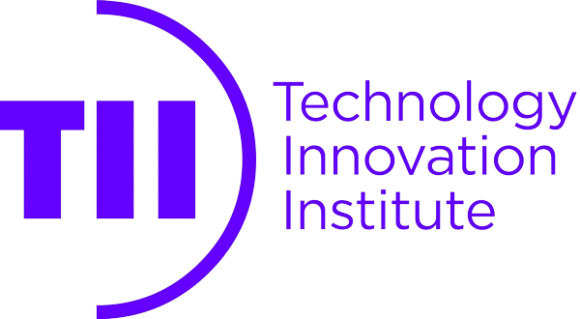



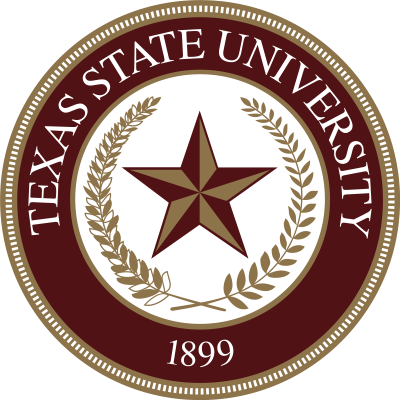
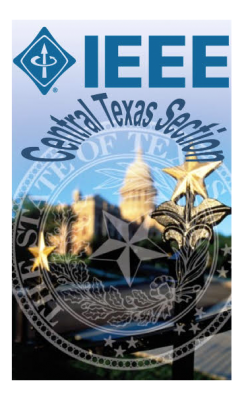
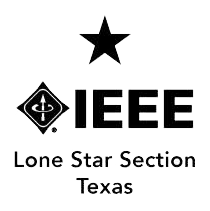
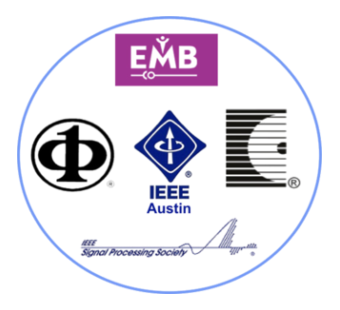

.png%3Fitok=HPhdjq1T)
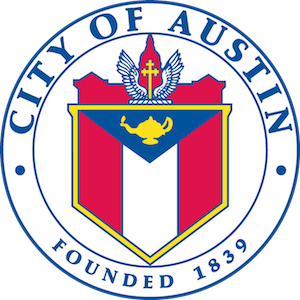
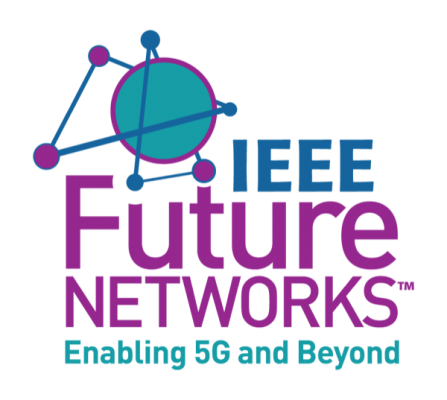

_0.png%3Fitok=n0ncuwzS)